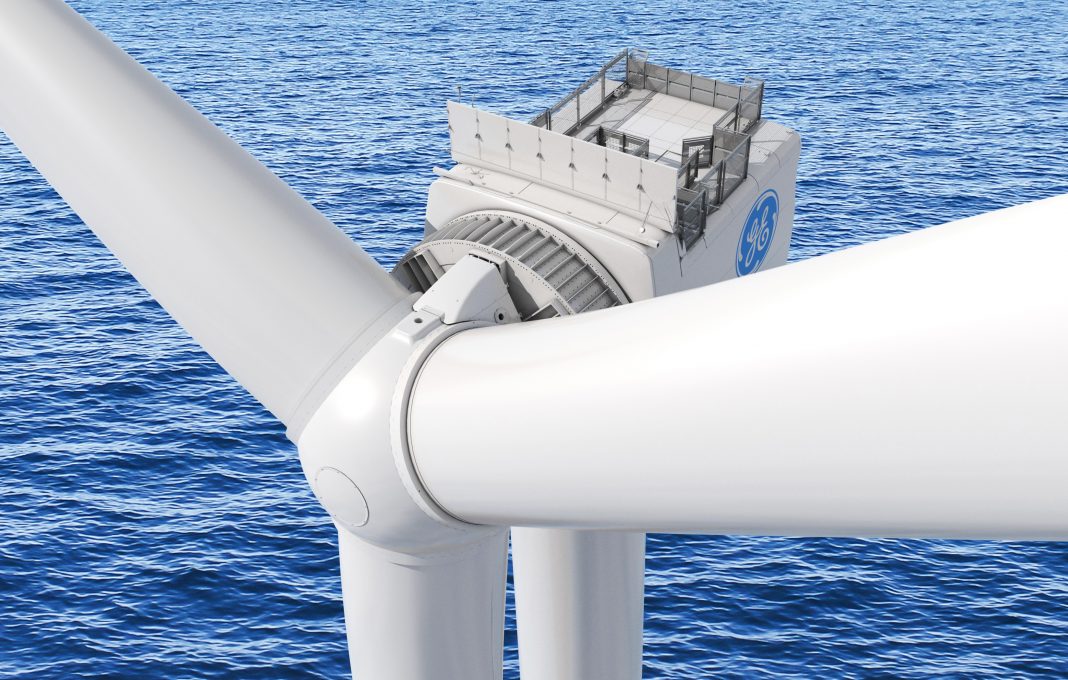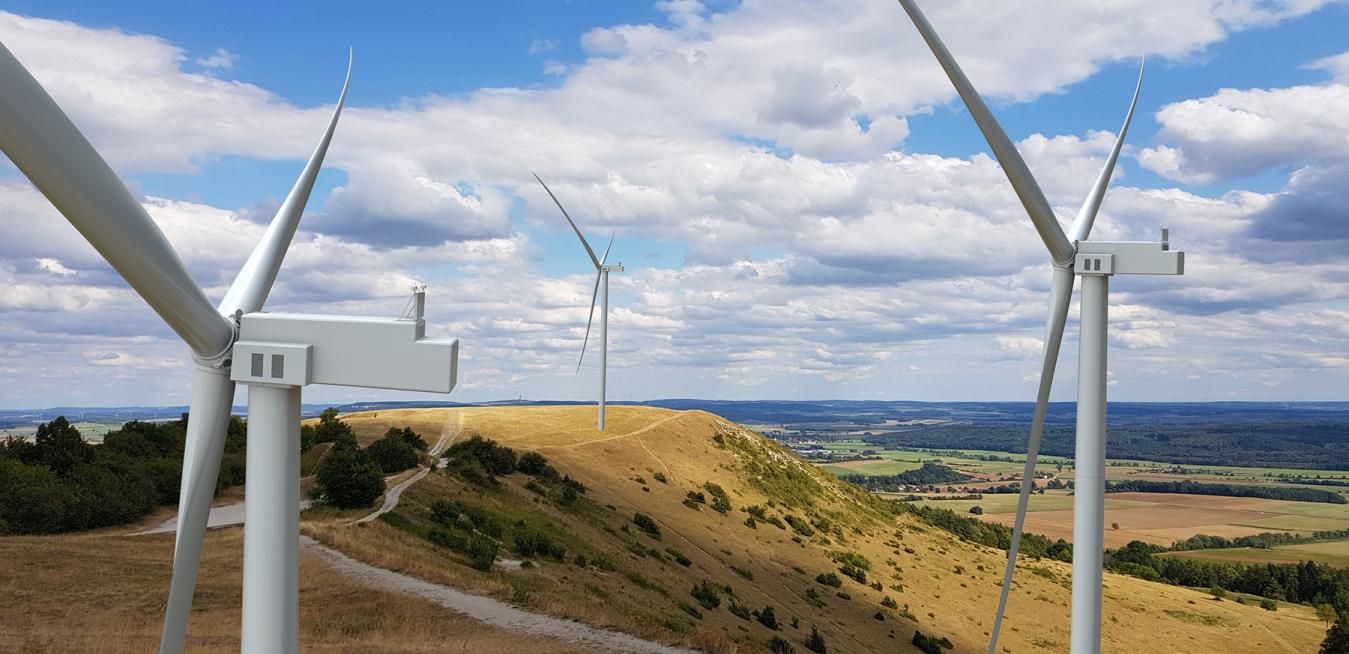As the world confronted the COVID-19 pandemic in 2020, the sudden economic slowdown had a profound impact on global energy demand. Even as we continue to tackle the changes the past year has brought, the impact on energy offered a dramatic reminder of the enormous challenge that climate change represents. Much like COVID-19, the warming planet will both impact the whole world and require action from the whole world. As a result, the consensus around the need to take swift global action toward decarbonization has only grown.
Today is the first day of the Atlantic Council Global Energy Forum, part of Abu Dhabi Sustainability Week. GE leaders and others are discussing the future of energy – decarbonization in particular.
As a global community looking to decarbonize, at the top of the list is finding a sustainable path for power generation – a sector responsible for 41% of human-generated carbon dioxide emissions. Yet, at the same time, we face the reality that global energy demand continues to rise. By 2040, the world will require 50% more electricity than we have today. It is worth noting that, according to the International Energy Agency, nearly all of this new energy demand will come from emerging markets.
At GE, we have been sharpening our strategic focus in this area and working closely with customers to discuss a critical question: how then, can we reduce global emissions from the energy sector while also increasing power generation in a way that is accessible in developing markets?
This question represents the growing energy trilemma, a term referenced by the World Energy Council and discussed in our recent whitepaper on climate change, which reflects the need for countries to simultaneously balance energy equity (in areas such as affordability), energy security and reliability, and environmental sustainability.
For emerging markets, achieving this balance can be particularly tough.
These countries have much less ‘wiggle room’ around affordability, due to more constrained government budgets and higher-cost access to capital. Secondly, the reliability puzzle is compounded by many countries still working to bring electricity to all citizens, even as fast demand growth must be met to unlock further economic activity. Sustainability, too, is more urgent, with populations and environments in developing countries often exposed to particular risk when it comes to climate change.
What, then, is the way forward for emerging markets?
They can leverage three approaches: switching fuels, adopting advanced technologies, and making better use of existing assets. By leveraging each of these to the best advantage in light of each country’s unique conditions, emerging markets can go a long way toward overcoming the trilemma.
Switching to cleaner power sources
When it comes to fuel switching, countries like India, China, and South Africa are looking at transitioning to cleaner-burning, reliable, and high-efficiency thermal power sources, including using natural gas and increasing the share of renewable energy in the energy mix. Broadly speaking for example, making the shift from coal to natural gas could reduce carbon emissions by 50 – up to 60 – percent.
Other countries, like Argentina and Brazil are meeting a growing share of urgently needed new generating capacity by building wind and solar farms, rather than conventional power plants. And while much talk about renewable capacity focuses on solar PV and wind, hydropower also provides opportunities. In Pakistan, for example, a new GE-developed hydro-electric power plant on the Indus River will, in just its first phase, produce enough electricity to power 4 million households.
Additionally, gas-fired power plants can begin to incorporate low-BTU fuels such as hydrogen and implement carbon capture technologies to further reduce emissions. As technologies further improve and costs fall for hydrogen production from renewable power generation, gas turbine plants ultimately could move to 100% hydrogen and thus, near-zero emissions. Gas will play an important role in decarbonization efforts for both developed and emerging economies, both now and in the future.
Adopting advanced technology
The second opportunity is for emerging markets to deploy the most advanced power generation technologies available, in both renewable and conventional generation.

In renewables, the world’s most powerful offshore turbine, GE’s Haliade-X, can provide a huge amount of carbon-free energy from a single turbine. With blades longer than a football pitch, one rotation of a Haliade-X can power a UK home for two days. Similar advances in onshore wind also allow for more efficient electricity generation in developing markets. New wind farms, including the Serra da Babilonia and Ventos da Bahia projects in Brazil, will operate GE Cypress turbines. These turbines have larger rotors and taller towers that allow for greater energy production and thus more competitiveness for our customers. And the next-generation Cypress will be even more powerful, with each turbine capable of powering thousands of households in the developing world.
The world’s largest, most efficient gas turbines are also contributing. Pakistan has already installed six GE HA gas turbines, which are helping the country to use natural gas more efficiently and reducing the carbon footprint of power generation activities. What’s more, the turbines help deliver big power capacity gains quickly. The three HA-equipped power plants in Pakistan can generate the equivalent electricity needed to power up to 7.3 million Pakistani homes. Two of GE’s HA gas turbines are also expected to begin supplying reliable and affordable electricity to Bangladesh from 2022 onwards.
Lower CAPEX, higher output
The third important way forward is to improve the performance of existing energy assets. Because these approaches are not capital intensive, they deliver economic benefits, not only by adding electricity capacity to the grid, but also by allowing capital resources to be used for other purposes.
Digital solutions, such as asset performance management (APM) software, can help operators in the energy sector enhance equipment and infrastructure operations. In Qatar, grid APM software is helping the national utility reduce substation faults by 50%.
In Turkey, upgrades to a coal-fired steam plant will increase both availability and output by more than 20%.
For gas turbines, a range of upgrade options reduce emissions per unit of electricity produced, deliver more efficient use of fuel, and enhance reliability of electricity supply. This approach is being taken in countries like Ivory Coast, Tanzania, Nigeria, Egypt, Iraq, and Vietnam. At the West Damietta Power Plant in Egypt, GE’s Advanced Gas Path (AGP) upgrades on four 9E gas turbines have helped to enhance fuel efficiency by up to 2.2% and increase the average output per turbine by over 4.5 megawatts.
This approach applies not only to conventional generating technologies, but also to renewables. In the Philippines, a GE upgrade to key equipment at a 53-year-old hydro-electric plant is expected to extend its life by 50 years and increase its output by 4%.
These are exciting and promising approaches, as we face the clear urgency to decarbonize. They help all countries – and emerging markets in particular – to meet the needs of climate change, while still accommodating fast-growing demand and ensuring both affordable and reliable electricity.
This trilemma represents the greatest challenge the power sector has ever faced. But, emerging markets have a wide range of tools across source switching, advanced technology adoption, and power infrastructure upgrades and improvement, to build a brighter future for their citizens while also contributing to global decarbonization efforts.





